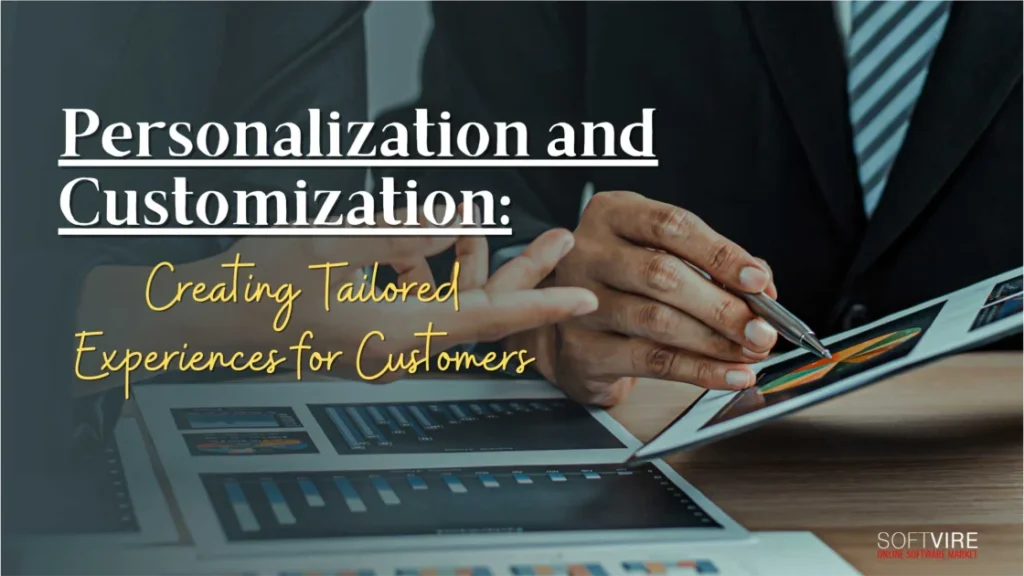I. Introduction
A. Definition of personalization and customization: Personalization refers to tailoring products, services, and experiences to meet customer preferences and needs. Customization involves allowing customers to make personalized choices or modifications to products or services.
B. Importance of tailored experiences for customers: Personalized and customized experiences enhance customer satisfaction, engagement, and loyalty. Meeting individual preferences and needs can drive customer retention and foster long-term relationships.
C. Purpose of the outline: The outline aims to provide a comprehensive guide on leveraging personalization and customization strategies to create tailored experiences that resonate with customers.
II. Understanding Personalization and Customization
A. Definition and key differences: Personalization focuses on delivering relevant and individualized experiences based on customer data and preferences, while customization allows customers to make unique choices or modifications.
B. Benefits and advantages: Personalization and customization can lead to increased customer satisfaction, engagement, conversion rates, and customer lifetime value. They also foster a sense of exclusivity and create a competitive advantage.
C. Role of customer data and technology: Data from customers and modern technology, like artificial intelligence (AI) and machine learning (ML), play a crucial role in collecting, analyzing, and applying insights to personalize and customize experiences.
III. Leveraging Customer Data for Personalization
A. Collecting and analyzing customer data: Gathering customer data through various touchpoints, including website interactions, purchase history, and demographic information. Analyzing this data provides insights into customer preferences, behaviors, and needs.
B. Segmentation and targeting: Segmenting customers based on shared characteristics or behaviors enables personalized targeting and messaging. It allows marketers to tailor offers and recommendations to specific customer groups.
C. Utilizing data analytics and insights: Applying data analytics and AI-powered algorithms helps uncover patterns, trends, and correlations within customer data. Insights gained from data analysis inform personalization strategies and decision-making processes.
IV. Creating Personalized Content and Messaging
A. Customizing website experiences: Personalizing website content, navigation, and design elements based on customer preferences and behavior. Utilizing dynamic content and recommendation engines can enhance the user experience.
B. Personalized email marketing campaigns: Tailoring email communications based on customer data, including past purchases, browsing history, and engagement metrics. Crafting relevant and timely messages increases open rates, click-through rates, and conversions.
C. Tailoring advertising and promotions: Delivering targeted and personalized ads across various digital channels, leveraging customer data and insights, and offering personalized promotions and discounts based on customer preferences and behavior.
V. Implementing Customization in Product and Service Offerings
A. Customizing product recommendations: Providing personalized product recommendations based on customer preferences, purchase history, and browsing behavior. Utilizing recommendation algorithms and collaborative filtering techniques can enhance the customer experience.
B. Providing configurable and personalized products: Allowing customers to customize product features, options, or specifications to align with their preferences and needs. Offering configurators and interactive tools facilitate the customization process.
C. Offering personalized services and support: Tailoring customer service and support interactions based on individual needs and preferences and providing personalized recommendations, proactive assistance, and tailored solutions.
VI. Enhancing User Experience with Personalization
A. Personalized website navigation and interfaces: Adapting website navigation menus, layout, and content based on customer preferences and browsing history. Creating intuitive and personalized user interfaces improves usability and engagement.
B. Adaptive and predictive user interfaces: Leveraging AI and ML technologies to deliver adaptive user interfaces that dynamically adjust based on real-time user interactions and behavior. Predictive interfaces anticipate user needs and preferences, providing a seamless and personalized experience.
C. Customizing customer journey and interactions: Designing customer journeys that adapt based on individual preferences, enabling personalized interactions at every touchpoint. Mapping out customer touchpoints and optimizing each journey stage enhances the customer experience.
VII. Implementing Personalization and Customization Strategies
A. Developing a personalization roadmap: Creating a strategic plan outlining personalization goals, initiatives, and timelines and defining key metrics and performance indicators to measure success.
B. Implementing personalization technology and tools: Adopting marketing automation platforms, customer relationship management (CRM) systems, and other technologies and personalization engines to enable data-driven personalization at scale. We are integrating systems and leveraging third-party tools where necessary.
C. Testing and optimization: Conducting A/B tests and iterative experiments to optimize personalization strategies and continuously monitoring and analyzing performance metrics to refine and improve personalization efforts.
VIII. Addressing Privacy and Ethical Considerations
A. Respecting customer privacy and consent: Ensuring compliance with privacy regulations, obtaining necessary consent, providing transparency regarding data usage and respecting customer preferences, and offering opt-out options.
B. Ensuring data security and protection: In place robust data security measures to secure consumer data from unauthorized access, breaches, and cyber threats. Encrypting sensitive customer information and regularly updating security protocols.
C. Adhering to ethical guidelines and regulations: Following ethical guidelines and industry best practices when collecting, storing, and utilizing customer data, being transparent about data practices, and ensuring fairness in personalization efforts.
IX. Measuring and Evaluating Personalization Effectiveness
A. Key metrics for measuring personalization success: Metrics such as conversion rates and click-through rates should be tracked, customer satisfaction scores and customer lifetime value. They are analyzing data to assess the impact of personalization on business objectives and customer outcomes.
B. Analyzing customer feedback and satisfaction: Gathering customer feedback through surveys, reviews, and social media monitoring and monitoring sentiment analysis and customer sentiment scores to gauge satisfaction and identify areas for improvement.
C. Continuous improvement and optimization: Utilizing data-driven insights to refine personalization strategies, identify areas for optimization, enhance the effectiveness of tailored experiences, and implement a culture of continuous learning and improvement.
X. Overcoming Challenges and Limitations
A. Data quality and accuracy: Ensuring the accuracy, reliability, and integrity of customer data through data validation processes, quality control measures, and data hygiene practices.
B. Balancing personalization with privacy concerns: Striking a balance between personalized experiences, respecting customer privacy and adhering to privacy regulations, being transparent about data usage, and providing opt-out options.
C. Managing organizational and technological complexities: Overcoming organizational resistance, aligning internal stakeholders, and investing in the right technologies and infrastructure to support personalization initiatives.
Conclusion
In conclusion, personalization and customization are crucial in creating tailored customer experiences. By leveraging customer data, organizations can deliver personalized products, services, and content that align with individual preferences and needs.
Personalization strategies enhance customer satisfaction, engagement, and loyalty, increasing conversion rates and long-term relationships. It is essential to balance personalization with privacy considerations and ensure data security. Measuring the effectiveness of personalization efforts and continuously optimizing them based on data insights are crucial to achieving success.
By embracing personalization and customization, organizations can differentiate themselves in a competitive market and meet customers’ evolving expectations.
Are you looking for online learning tools and discounted Microsoft products? Check out our hot offers at Microsoft Softvire New Zealand. “Upgrade to the latest version of Windows 11 and unlock new features and enhanced security.”



